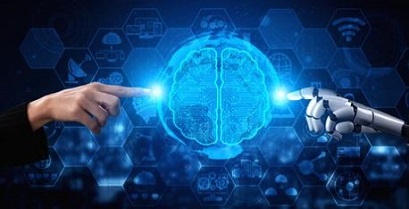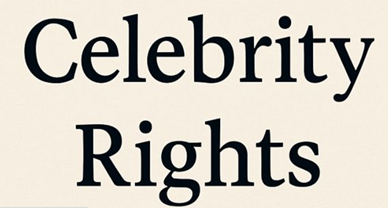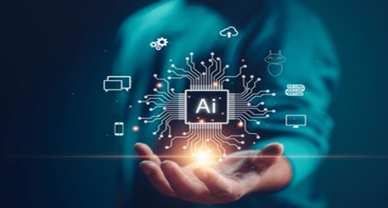Interaction Between Ai And Copyright : Who Has The Copyright In Ai?
Introduction
The usage of artificial intelligence has been increasing over the years. The term artificial intelligence was coined by McCarthy in the year 1956. Even though no legal definition has been ascribed to the term as of yet, but broadly it is perceived as the ability of the machines to perform work which require human intelligence.[1] The machines here perform tasks which requires use of learning, decision making, human intelligence etc. In this article I will look into two main questions, firstly, who owns/ who should own the copyright in AI (ii) whether AI satisfies the criteria of human element in AI.
[Image Sources : Shutterstock]
Copyrightability In Indian Context
Copyright is a legal term used to describe the rights that creators have over their literary and artistic works. Works covered by copyright range from books, music, paintings, sculpture and films, to computer programs, databases, advertisements, maps and technical drawings. In India, section 14 of the Copyright Act[2] defines copyright in terms of the exclusive rights granted to the owner of the copyright.[3]
In UK, the ‘test of originality’ for granting copyright was explained by the Chancery Division of England, by using the doctrine of ‘sweat of the brow,’ which was followed in the case of Walter vs Lane[4] and Ladbroke (Football) vs William Hill.[5]
In USA, the court in the case of Fiest Publication Inc. vs Rural Telephone Services,[6] shifted from sweat of the brow doctrine to the requirement of a minimum level of creativity .
The approach of ‘creative originality’ was also adopted bv the Indian courts in the case DB Modak. [7]
Is Ai Protected By Copyright?
AI is a new technology which has been recently evolving. Various technologies have been granted as they developed such as photography, etc. and so on. The use of AI has been increasing over the years. The NITI Aayog in its conversation paper, 2018 suggested that the usage of AI had been increasing in all areas such as medical care, schooling and so on.[8]
Who Owns The Copyright In Ai?
When it comes to AI, there are various entities for which a claim for copyright could be made:
Programmer:
One of the main contention of granting ownership to AI is that it is the programmer who designs, creates, or trains the computer software, without which the AI system would not have been created. The creation of the system which is independently and creative requires mentally challenging processes, whereby significant costs are involved during the creation of the program, and hence the programmer needs to be rewarded for his efforts.[9]
Trainer:
The AI system for its operation requires training of neural networks. The ability of the machine to produce the output depends significantly on the training of its neural networks by the trainer. Hence, the trainer also has strong claims for ownership of AI.[10]
AI:
With respect to the question whether AI should be granted ownership or not one needs to ascertain whether AI could be accorded legal personality.
An important factor here is that granting of legal personhood has been evolving over the years. For instance companies have now been granted a separate legal entity from the persons who are running the company.[11] Further, Africans and American women who were excluded from being considered as legal persons earlier were granted legal personhood over time.[12]
Therefore, what could be granted legal personhood is based on society’s reasoning and is based on legal, and moral considerations.
User:
The user of a computer-generated work is responsible for arranging, polishing and editing the raw material resulting in the creation of a tangible fixed product which is capable of being exploited commercially.[13]
Further, whether the owner should be granted copyright or not should be a factual decision based on the amount of creativity exerted by each candidate. For instance in the case of Burrow Gills[14] the court gave copyright to a photographer who had set up the place for taking the photograph stating that she was the closest when the photograph was being taken.
VARIOUS THEORIES TO AI APPROACH: DOES AI SATISFIES THE REQUIREMENT OF ‘HUMAN ELEMENT’ IN COPYRIGHT
There are different theories to approach AI: The first one being the Turing Test approach. The Turing Test approach also knows as the imitation game was developed by Alan Turing in the year 1950. It is a test which exhibits ability of the machine to exhibit behaviour similar/ equivalent to human. The test involved that natural language conversations would take place between a machine designed for generating human like responses and a human.[15]
The second approach in AI is the cognitive modelling approach. The system is built on the idea that the computation within the human brain cannot possibly be emulated in the artificial intelligence machines.[16]
The third approach towards AI is ‘the laws of the thought approach’. According to the book, “Artificial Intelligence a Modern Approach”, the “right-thinking reasoning process was first codified by the Greek Philosopher Aristotle. The Aristotle in his syllogisms provided patterns for argument structure which always made correct premises. For instance, Socrates is a man, and that all men are mortal would lead to a conclusion that Socrates is mortal. [17]
The fourth approach is the rational agent approach. A rational agent is defined as an agent which has a clear preference, is able to model uncertainty, and could act in a manner which maximizes his profit.[18]
In all these approaches, a common element which can be seen is the requirement of the AI system to act akin to human beings. Thus, the presence of a ‘human element’ is an essential and key element in the working of AI. Hence, AI cannot be said to necessarily exclude the presence of the requirement of “human element”.
CONCLUSION
In India there has not yet been a statutory recognition to the copyrightability of AI. Further, it was seen that the with respect to copyrigtability India has adopted the approach of ‘modicum of creativity’ drawing from the case of Fiest Publications. Among, the different candidates who can claim ownership in AI, it was concluded that it has to be a fact-based inquiry based on the amount of creativity exerted by each party. Further, a common contention for arguing that AI does not fulfill the requirement of “human element” required in copyright was also negated by exploring the four different approaches to AI.
Author: VARSHA SHARMA, IVth Year, BALLB (Hons.), Jindal Global Law School, O.P. Jindal Global University, in case of any queries please contact/write back to us at support@ipandlegalfilings.com or IP & Legal Filing.
References
[1] Philip C. Jackson, Introduction to Artificial Intelligence (1 Dover Publications, Inc. 1985)
[2] 1957
[3] India Law, Analysis of Doctrine: Sweat of the Brow’ vs ‘Modicum of Creativity’ vis-à-vis Originality in Copyright Law<https://www.indialaw.in/blog/blog/law/analysis-of-doctrines-sweat-of-brow-modicum-of-creativity-originality-in-copyright/>
[4] [1900] A.C. 539
[5] [1964] 1 All ER 465
[6] 499 U.S. 340
[7] Eastern Book Company vs DB Modak Appeal (civil) 6472 of 2004
[8] Aakanksha Bhatia, AI and Copyright (Jus Corpus LJ 747, 2022) 753
[9] Bo Han, Co-teaching: Robust Training of Deep Neural Networks with Extremely Noisy Labels, (CENTRE FOR ARTIFICIAL INTELLIGENCE, UNIV. OF TECH. SYDNEY, Oct. 30, 2018), 4
[10] Ibid
[11] Lawaspect.com, Concept of Separate Legal Entity of a Company, < Concept of Separate Legal Personality of a Company – Company Law Essays (lawaspect.com)>
[12] Ibid
[13] Ibid
[14] Dan Rosen, A Common Law for the Ages of Intellectual Property, (38 U. MIAMI L. REV. 1984) 769, 804
[15] Java T Point, Turing Test Approach in AI, Accessed on 12th December, 2022, < https://www.geeksforgeeks.org/agents-artificial-intelligence/>
[16] Arwin Datumaya Wahyudi Sumari and Adang Suwandi Ahmad, Cognitive Artifical Intelligence: Concept and Applications for Human”, July 15th 2017, <https://www.intechopen.com/chapters/58975>
[17]Gopichand Krishnan, Thinking Rationally: The Laws of Thought Approach: Artifical Intelligence, Accessed on 12th December, 2022, < https://www.gopichandrakesan.com/thinking-rationally-the-laws-of-thought-approach-artificial-intelligence/>
[18] Geeks For Geeks, “The Rational Agent Approach in AI”, Accessed on 12th December, 2022, < https://www.geeksforgeeks.org/agents-artificial-intelligence/



